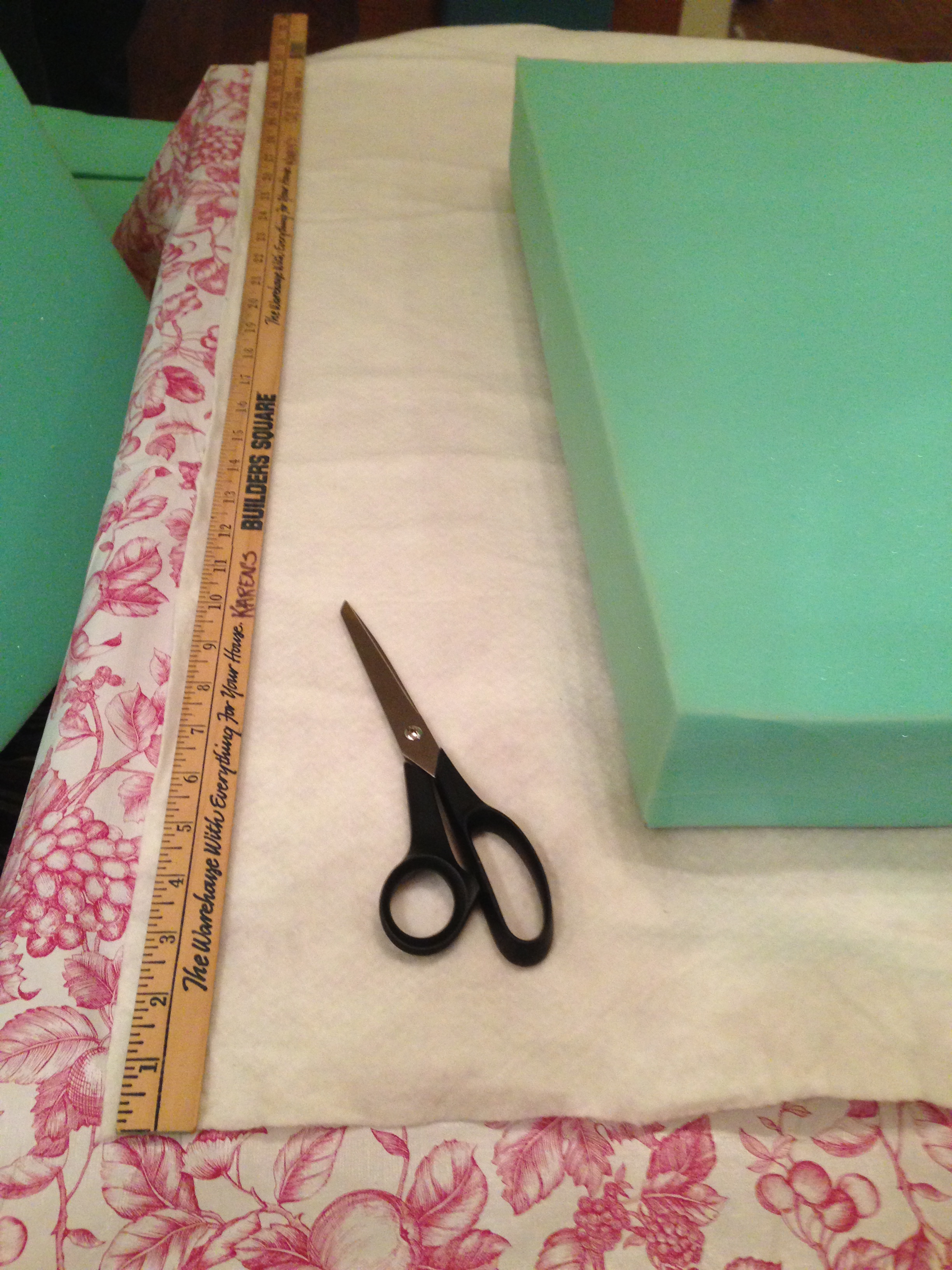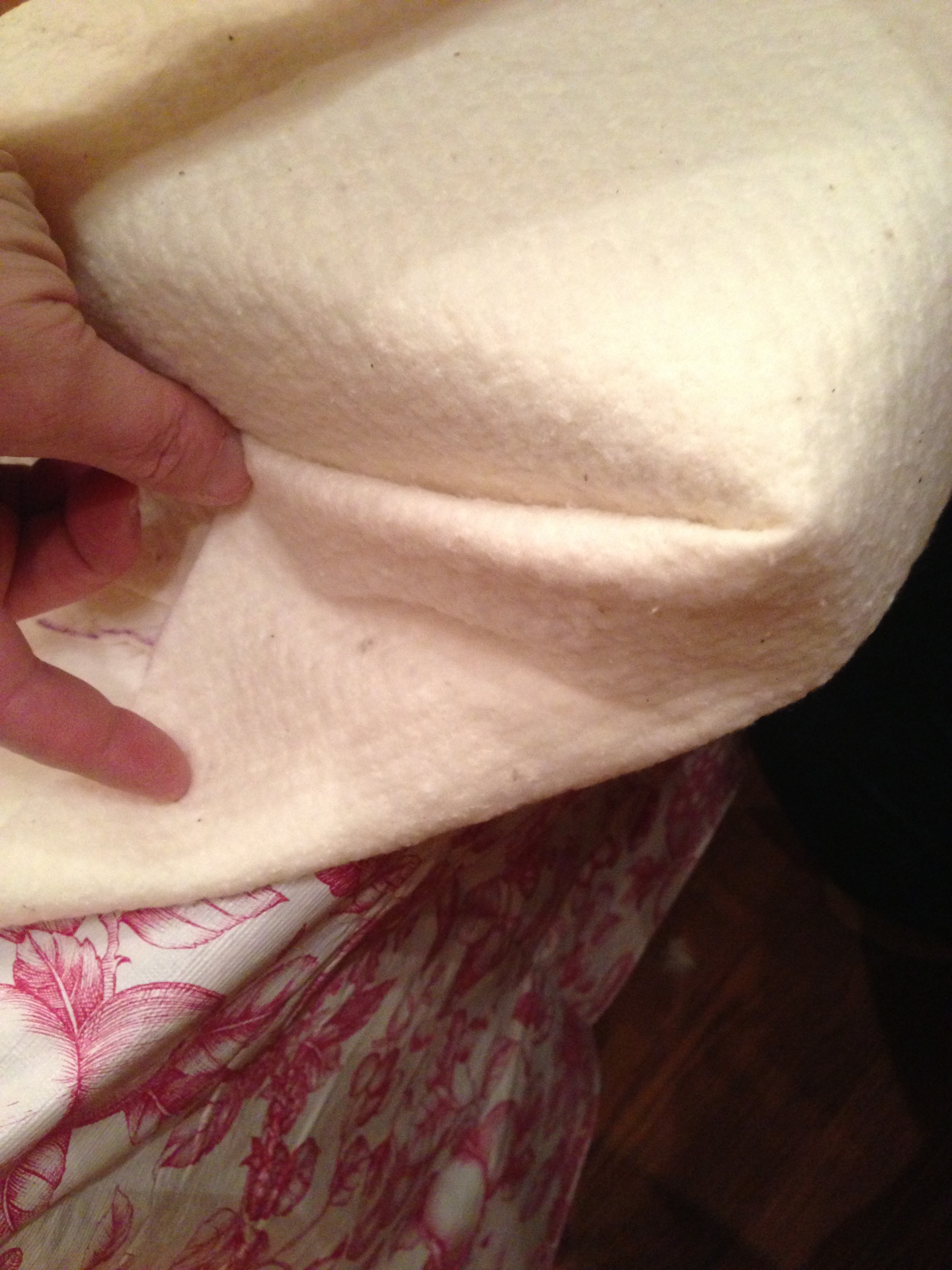
Yes, it’s true. My wonderful comfy sofa and I have had an adversarial relationship for some time. A couple of years back, before I started at Lehman’s, every paycheck I made for entire summer went toward this couch. It was perfect for house we were in then.
I knew when I bought it that it had feather cushions for the back. “They’re in bolsters, and the cushion covers are over those. I’ll be fine,” I said.
Well, not so much. And when I realized that my niece, who spends a good portion of her time stretched out on the couch was most likely allergic to the couch too, I knew it was time to replace the cushions. I also knew my budget wouldn’t stretch to custom cushions, so I would need to do it myself.
First, I pulled the bolsters out. Feathers were everywhere, and I was sneezing up a storm! I donated the bolsters to the youth room at a local church, where they are going to be covered and used as floor cushions. Then, I swept up all the feathers that were all over my living room, so I could work without sneezing.
Finally, it was time to restuff the cushion covers. For that, I got help from a friend who has done similar projects. We used just over 2 yards of thirty-inch wide, 4-inch thick hypoallergenic foam, wrapped in pre-needled cotton batting. (I had two 50% off coupons for the fabric store, so I was, in two visits, able to get both at a big discount.) We measured the foam, and cut it to three 21″ long x 30″ wide (the width of the foam) pieces. We had to wrap each foam piece in a length of batting that was about 15″ longer. We left the batting at its original 45″ width. My cushion covers were 20.5″ by 29.75 inches, so these measurements were fine.

It’s vital to wrap the batting tightly around the foam. This ’rounds off’ the edges of the foam, which compresses the foam slightly, allowing it to fit into a slightly smaller cushion cover. This compression helps add fullness to the cushion cover when the cushion is inserted. With four hands, the covering and insertion goes pretty well.
Lay the batting on your work surface. Place the cushion in the just slightly off the middle. You’ll wrap the cushion as if you’re wrapping a package.
First, pull the shortest ‘long side’ (the top of the flat part of the cushion) up over the cushion. (See picture above right.)
Hold it firm, and have your work partner bring the other “long side” over the cushion. Pull snugly and secure layers of batting with straight pins pushed directly into the foam, and then use either buttonhole thread or quad-folded regular sewing thread and whipstitch the long opening closed all the way across the foam piece.

It’s OK if you sew into and out of the foam a bit–it’ll keep the batting in place.

Once you have the long edge secured, you can fold over the first bottom corner (see right photo) and stitch it into place.
Don’t forget to pin it down before you start to sew. It’s very difficult to hold the corner in place and stitch. (Trust me. I know whereof I speak.)
 Then do the second bottom corner in the same way. After that, flip up the remaining edge, pulling it up onto the flat of the foam if you can. Again, the more you can snug up the cotton batting, the fuller your cushions will look.
Then do the second bottom corner in the same way. After that, flip up the remaining edge, pulling it up onto the flat of the foam if you can. Again, the more you can snug up the cotton batting, the fuller your cushions will look.
Now, do the other end in the same way.
It took my friend and I about two hours to wrap and pin three cushions, stitch the first one up, and restuff a cushion cover. Sewing solo, it took me about four hours to finish the two remaining cushions. Apparently, I stitch ‘too small’, according to my friend. I was really worried about things holding together, but she said the large, basting-type stitch that you see in the picture above is perfectly fine, and it should only have taken me about an hour to finish each cushion.
 Here’s my refitted sofa, with new pillows that were a gift. It’s much more comfortable now, because the cushions are more supportive and don’t bunch up or shed feathers anymore! The new cushions also hold the blanket down better, which means when the cats decide to climb up the cushions to look out the window, they’re not scratching the leather back of the sofa.
Here’s my refitted sofa, with new pillows that were a gift. It’s much more comfortable now, because the cushions are more supportive and don’t bunch up or shed feathers anymore! The new cushions also hold the blanket down better, which means when the cats decide to climb up the cushions to look out the window, they’re not scratching the leather back of the sofa.
Notes:
The vinyl tablecover in the pictures is so old–I have no idea where I got it. But if you like it, check out these vinyl tablecovers at Lehmans.com. They’re just as colorful and very retro-cool.
How to quad-fold thread: Pull out about a yard and a half of standard sewing thread. Run it through some beeswax. Bring the ends together, and pinch a fold in the center. Thread the fold (two threads) into a large-eyed needle, and match it up to the loose ends. Knot all four ends together. A crewel needle or a curved furniture needle are ideal for use in this project. You’re ready to sew!



























